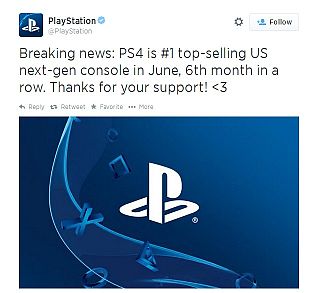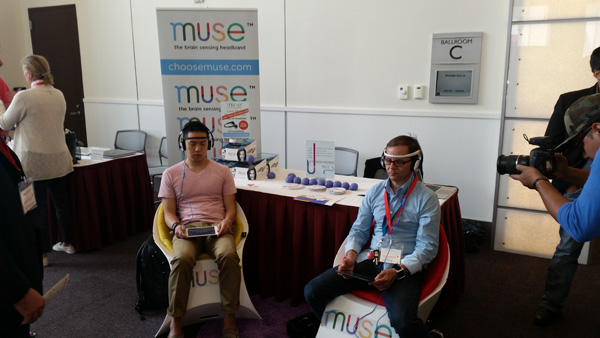The Casual Connect show comes to San Francisco next week on July 22 through July 24, and its three days are packed with multiple tracks of programming covering everything from game design to casino games to marketing to being an indie developer. The show is anything but casual in its comprehensive coverage of the games industry, and as a direct consequence the show is well-attended by the industry. Ostensibly it’s all about casual games, but somehow more intense games have managed to sneak into the tent, too.
Since there’s such a crowded schedule of events, the [a]list daily provides a look at some of the presentations that sound likely to be more interesting or educational. It’s also true that you can glean some information about the state of the industry and the important trends merely by contemplating the event schedule.
Interestingly, Amazon leads off prior to the show with an Amazon Developer Day on Monday. The event is billed as “the place for game developers to learn about building for Amazon’s latest devices, including Fire phone and Fire TV.” This shows Amazon is serious about developing a good set of apps for this hardware, and realizes that games are a key part of the business. This is a good way to see how serious a company is about building an audience for its game-playing hardware: Do they have a strong presence at industry events where developers can be influenced.
Another interesting thing to note about this year’s Casual Connect is the growing number of sessions devoted to eSports. As the sector continues to grow, so do the number of sessions. People realize it’s worth paying attention to eSports, particularly when major brands like Coca-Cola and American Express are jumping in as sponsors, streaming providers like Twitch and Azubu get millions of eSports viewers each month, and multiple companies like Riot, Wargaming and Valve are raking in hundreds of millions of dollars in revenues from games with strong eSports followings. Games are now being specifically designed for eSports, and games which could have an eSports component are getting a fresh look from companies eager to get a piece of this popular action.
Other popular topics at Casual Connect include the continuing search to find the right balance between gaming fun and selling things for free-to-play games, and the role of advertising in monetization. Just as popular a topic as free-to-play is how to increase retention and generate higher LTV’s, and many publishers seem to be heading towards harder core games to do that. While many sessions are devoted to various tools, statistics and analyses of how to tweak you key performance indicators, it’s nice to see some sessions devoted to game design as well, since ultimately that’s where the value resides. Tweaking metrics may be able to tease value out of its cave, but if there’s only a mouse-sized value in the game design cave you’ll never be able to turn it into elephantine profits.
Some of the sessions that look most interesting at Casual Connect:
Tuesday has a full lineup of interesting panels, beginning with the Mobile Game Publishing Executive Roundtable from 10:00 — 10:50. Panelists include Nick Malaperiman, Head of Publishing, Roadhouse Games; Giordano Contestabile, VP Product Management & Revenue,Tilting Point; Tim Harris, Founder & President,Industrial Toys; Walter Driver, Co-Founder & CEO, Scopely; and Barry Dorf, VP of Partnerships & Alliances, DeNA. The panel is moderated by Ian Atkinson, VP Product, Sleepy Giant.
After that, check out Dissecting League of Legends Monetization from 11:00 — 11:50; where Teut Weidemann, Senior Online Supervisor for Ubisoft Blue Byte analyzes the popular MOBA to discern some of the ways this game generates so much revenue.
After lunch on Tuesday, from 2:00 to 2:50 the session titled eSports: Opportunities for Brands and Game Companies should be revelatory. Panelists include Craig Levine, VP North America, ESL: Kevin Lin, COO, Twitch; Matt Wolf, Head of Global Gaming,The Coca-Cola Company; and it’s moderated by Peter Warman, the CEO of data firm Newzoo.
Concluding the great lineup of sessions for Tuesday is Honing the Power of the YouTube Influencer from 4:00 — 4:50, with Luke Stepleton, Co-founder, 3BlackDot; Tom Cassell, YouTube Personality, The Syndicate Project; Adam “Seananners” Montoya, YouTube Personality, SeaNanners Gaming Channel; Jimmy Yun, CEO, Section Studios; and Mitch Berman, Managing Partner, Zen Media Entertainment Group. It will interesting to see what these key people say about sponsored YouTube content.

Wednesday also has a strong lineup of sessions, with one of the highlights sure to be Messaging Apps: A New Frontier for Gaming Developers to Acquire and Engage Gamers from 2:00 — 2:50, with Jim Ying, VP Game Publishing, Tango; Josh Burns, Gaming Industry Consultant; and Dennis Yi, Business Development Manager, GAMEVIL USA, moderated by Chris Tanquary, Strategic Partnership Lead, Samsung Media Solutions Center America. Messaging apps like WeChat, Line and Kakao have become leading ways for mobile games to find customers in Asia. Will this happen elsewhere, and how do you get a piece of that action.
Also at the same time on Wednesday is a session for those developers trying to go their own way. Indie Entrepreneurship: Lessons from the Trenches is at 2:00 — 2:50, featuring Amy Dallas, Co-Founder, ClutchPlay Games; Robin Hunicke, Co-Founder, Funomena; Marguerite Dibble, President, gametheory; and Jenna Hoffstein, Founder, Little Worlds Interactive. The panel is moderated by Jason Della Rocca, Co-Founder, Execution Labs.
Finally, at the end of Wednesday there’s PC to Console to Mobile: The Proliferation of eSports from 4:00 — 4:50, with Anthony Jacobson, Head of Publisher Relations and Business Development, Skillz Inc.; Wim Stocks, EVP,Virgin Gaming; Marcus “djWHEAT” Graham, Director of Community & Education, Twitch; and Tim Harris, Founder & President,Industrial Toys. The moderator is Mike VORHAUS, President,Magid Advisors.
If you’re still able to absorb information after two intense days, on Thursday it’s worth checking out User Acquisition Secrets from the Top Casino Games in the World from 11:00 — 11:50, to get a read on the growing market for social casino and real-money gaming. The panel includes Nick Talarico, Founder & CEO, 12 Gigs; Riz Virk, Co-Founder & CEO, Midverse Studios; Shmuel Tennenhaus, VP Marketing, Big Fish; and Louis Deering, Marketing Services Department Manager, Income Access Group. The moderator is John Gargiulo, SVP Business Development & Marketing, BlueStacks.
There are a host of other sessions as well, including a full series of sessions on design, art, audio, and development in general. Indies are also shown some serious love with a full track devoted to panels and sessions on every aspect of the indie experience, from funding to development to marketing. Whatever your specialty or interest in the game industry, there will be sessions or even whole tracks devoted to it at Casual Connect SF. Look for the [a]list daily’s reports from the show next week!



 Attendees try on Muse’s headband outfitted with brain sensors.
Attendees try on Muse’s headband outfitted with brain sensors.